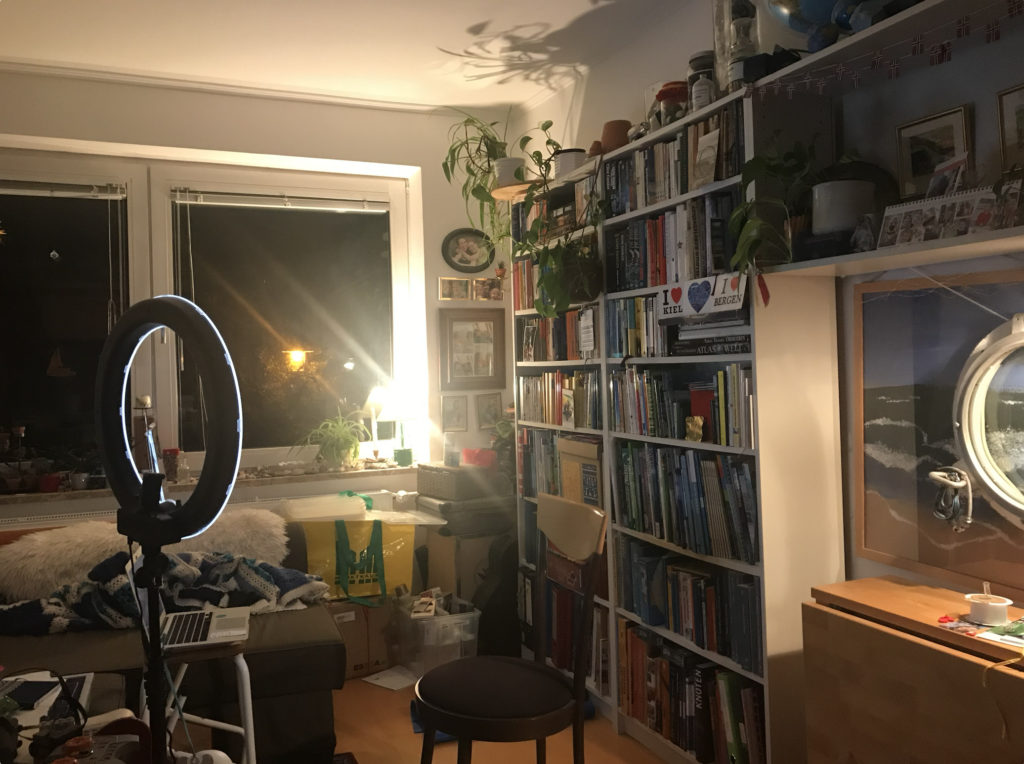
Throwback to the pandemic: Teaching, cognitive and social presence (Rapanta et al., 2020), and zoom fatigue (Bailenson, 2021)
When I was teaching the emergency “how to teach online” courses online during the pandemic, I used to refer to an article by Rapanta et al. (2020) a lot, where they talk about teaching, cognitive, and social presence, which I want to link to in another post I am working on. But either I cannot find things on my own blog, or I was too stressed out to write a summary back then, so here we go.
Rapanta et al. (2020) use much older models by other authors (that I only browsed, so go to the Rapanta article for citations) to distinguish three roles of a teacher:
- Facilatory (or teaching) presence: designing and facilitating the instruction, managing discussions
- Cognitive presence: fostering student learning and critical thinking through the kinds of questions they ask, task they give, reactions to what students say and ask
- Social presence: being visible and available as an authentic person that students can relate to and build trust with
The last one is the one that gets easily lost when teaching online, but there are things we can do, like for example:
- Inviting interactions! Not just the “any questions?” (wait 2 seconds, then continue talking). Actually asking and wait for answers, and maybe using tools like “temperature checks” or “lightenting storms in a chat“.
- Having our own camera on so students can actually see us (which we have gotten more or less used to by now, but in spring 2020 that was still very foreign and uncomfortable for many!)
- Show where we really are, so no virtual background or blurring. On this one I’ve always been getting some pushback. Do we want to show our messy home to students? Maybe not, but then find a non-messy corner? Although I think sharing the reality of being in a lockdown made it easier to relate to us, and the students were in the same boat after all. And of course there are good reasons for using a virtual background, for example if you are presenting your slides weather-forecast style behind you, or if your background image has any other relation to your actual learning outcomes.
- Disclosing things about ourselves beyond our name and which course we are teaching. Be authentic, show enthusiasm, be someone that students can relate to!
- Consider presenting ourselves in places where students can discover other sides of us, like for example social media. Like how they would run into us in the supermarket or the swimming pool…
I’m adding the photos in this blog post as examples of social presence, but also because I got such a strong flash back to what it was like during lockdown in Germany. I used to teach academic development workshops late at night, so that people with small kids might be able to attend. I would always end the official part on time, but then the informal part afterwards would go on long and longer, because people were so happy to chat. And I would be sitting in my improvised home studio (you see the ipad that I used for the video call peeping through the ring light, and my computer sitting on a stool below, all so I would have a background that I liked…).

But this reminds me of something else that I would usually mention in those workshops, and that are the “4 reasons for zoom fatigue” (where I referred to a preprint of Bailenson, 2021) and how you can try to counteract them:
- Usually in meetings, we look at a speaker, but don’t have the feeling of everybody constantly staring at everybody else. And even if there aren’t a lot of people in a meeting: High amounts of close-up eye contact are very intense! (And if there is only one person on your screen, the default is that they are VERY large, so it’s good to manage the size of that window so that they don’t feel like they are invading our privacy)
- Seeing yourself during video chats constantly in real-time is exhausting! Constantly checking your hair, whether you look bored, if there are weird shadows on your face?! Back then, the solution was a post-it over the part of the screen where you were visible, now it’s possible to set the settings in a way that you don’t have to see yourself, at least in most video conferencing softwares.
- Video chats dramatically reduce our usual mobility. We have to sit still in front of the camera in order to project interest and focus. Unless, of course, we agree on a quick stretching break or similar, or talk about how we need to pace while talking. But that only works for trusting relationships, not necessarily when you are presenting in front of a group you aren’t familiar with…
- The cognitive load is much higher in video chats. Since we have all the information of all the other faces and facial expressions that we are constantly interpreting and the cats running across the screens, when, in a normal in-person presentation, we would probably only see a speaker in the distance and a lot of backs of heads between them and us…
Yep, this was my little throwback to the pandemic (where I actually also taught a lot of fun stuff about, for example, hybrid teaching of labs and field courses!). Those were interesting times…
Bailenson, J. N. (2021). Nonverbal Overload: A Theoretical Argument for the Causes of Zoom Fatigue. Technology, Mind, and Behavior, 2(1). https://doi.org/10.1037/tmb0000030
Rapanta, C., Botturi, L., Goodyear, P., Guàrdia, L., & Koole, M. (2020). Online university teaching during and after the Covid-19 crisis: Refocusing teacher presence and learning activity. Postdigital science and education, 2, 923-945.
"The importance of the room" - thoughts on a presentation by Marie Leijon today - Adventures in Oceanography and Teaching says:
[…] where we really are instead of using backgrounds (in order to show social presence, read more here), but now I was thinking about it in terms of accessibility. Am I maybe distracting from what I […]